By Paul McDivitt
University agricultural research has traditionally relied on small plot research on university-owned land, making some growers uneasy about applying university findings on their own farm. Two on-farm research projects in Minnesota are putting the University of Minnesota’s corn fertilizer guidelines to the test on farms around the state.
AFREC on-farm research
Minnesota’s fertilizer check-off dollars fund the Agricultural Fertilizer Research and Promotion Council (AFREC), which is made up of representatives from many of the state’s largest agricultural groups. Starting in 2017, AFREC funded independent agronomist Matt Wiebers to work with growers and crop consultants around the state to conduct on-farm research trials to study nitrogen (N) rates.
Wiebers wanted to know if the university’s suggested nitrogen rates (currently 120 to 145 pounds of N for corn-following-soybean and 152 to 180 pounds for corn-following-corn at the .10 price ratio) are right for Minnesota farmers. Along with seven other upper Midwest states, the U of M uses the Maximum Return To Nitrogen (MRTN) approach to calculate ranges of N rates that incorporate data from full nitrogen rate response studies around the state going back several years.
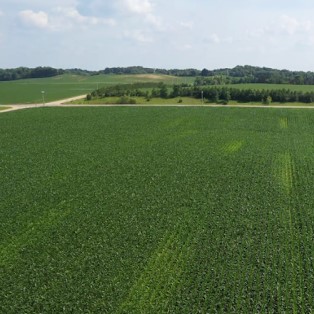
Wiebers’ research was conducted during the 2018 growing season, mainly in southern and southeast Minnesota. He used a plus-minus approach, running strips within the MRTN range and strips 30 pounds above and below the MRTN rate in each farmers’ field.
“What we saw in 2018 was that the MRTN rate did actually work out to be the best rate in the bulk of cases,” he said.
Using Wiebers' 2018 data, the breakeven was three bushels per acre (at the time, N fertilizer cost around $0.35 per pound and corn was going for $3.50 per bushel, a .10 price ratio).
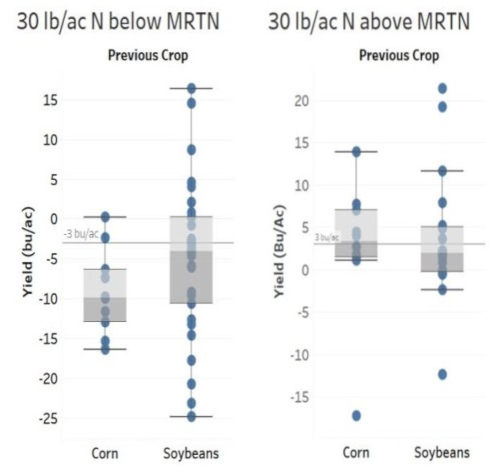
Each dot in the charts above represents one of Wiebers' on-farm trials. In the chart on the right, where 30 more pounds of N per acre than the MRTN was applied, 12 of the 29 trials (41%) had yield increases greater than three bushels per acre to cover the cost of extra nitrogen fertilizer. The remaining 17 trials (59%) had yield increases that did not cover the cost of N, meaning the MRTN rate was the most profitable in the majority of the trials.
The chart on the left shows that by reducing N rates 30 pounds per acre below the MRTN, 26 of the 40 trials (65%) had yield reductions greater than the cost of N (more than three bushels per acre). The yield reductions are especially evident with the corn-on-corn trials.
“It does appear that corn-on-corn management, when it comes to nitrogen, is a little more sensitive,” Wiebers added.
Wiebers' 2018 data showed that the corn-on-corn trials were more uniformly responsive when N was added, or removed, from the trial. He suggests farmers may need to more carefully manage nitrogen in a continuous corn system.
While there was significant variability in his results, Wiebers says that his research shows that it is possible to maintain high yields with corn-on-corn, but it’s about more than just nitrogen rates. Growers also need to manage residue, disease, and weed pressure differently than in a corn-soybean rotation.
Still, the findings raise some interesting questions for university researchers. Are the university’s corn-following-corn nitrogen rates too conservative?
Continuous corn nitrogen management
“What Matt's been seeing, particularly with corn-on-corn, kind of echoes a lot of the things that we've been seeing,” said Dan Kaiser, University of Minnesota nutrient management specialist.
The university’s suggested nitrogen rates for corn-following-corn have been steadily increasing for over two decades. As corn seed genetics have improved, it makes sense that higher-yielding varieties require more nitrogen, corn’s most limiting nutrient. However, the university’s corn-following-corn N rate suggestions have been increasing more than the university’s corn-following-soybean rates in recent years.
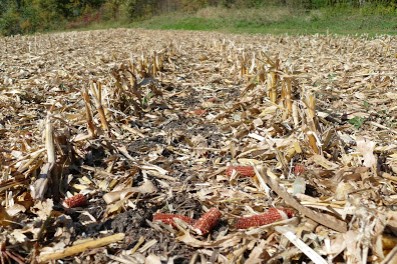
“I suspect that this has quite a bit to do with crop residue,” said Fabian Fernandez, University of Minnesota nitrogen management specialist. “In continuous corn, we have a massive amount of corn residue.”
Fernandez has been studying corn and nitrogen for many years. He remembers how the old varieties would start to decompose even before harvest due to disease and pest damage. Now, the new hybrids come to the end of the growing season pretty much intact. They're much more resilient to decomposition and are better protected against common stressors.
This means that, these days, there’s a lot more plant residue left on the field at the end of the growing season, and it’s in better shape than it used to be. In Minnesota’s cold climate, that means there likely aren’t enough warm days after harvest for residue decomposition. When the spring starts, nitrogen that otherwise could be available to the next crop is temporarily tied up by soil microorganisms as they work to decompose last year’s crop residue and eventually release the nitrogen back into the soil.
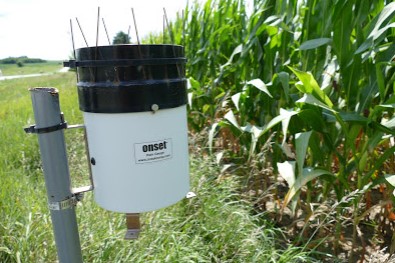
The other issue Fernandez believes is contributing to continuous corn systems’ greater N demand is a recent increase in heavy rainfall.
“The more precipitation you get, the more nitrogen that we are losing,” Fernandez explained.
He says that it used to be that most of the nitrogen loss in tile drainage was in the spring. Now, it's still happening in the spring, and then again in the fall with some of the larger fall downpours Minnesota has experienced in recent years.
University/MDA on-farm research
Another on-farm research project has been going on since 2015 in southeast Minnesota.
Jeff Vetsch, a researcher at the university’s Southern Research and Outreach Center (SROC) in Waseca is leading the study along with collaborators from the Minnesota Department of Agriculture (MDA).
“We're doing small plot trials on farmer fields. These sites have seven N rate treatments applied at planting and three split application treatments,” said Vetsch. The results are included in the MRTN database.
Vetsch saw a range in optimal N rates across the 10 on-farm sites. For corn-following-soybean, just one of his sites had an optimal N rate below the MRTN range while six sites had an optimal rate greater than the maximum. At three of those sites, the optimal rate was 29 to 59 pounds greater than the maximum of the MRTN range (144 pounds of N).
“These three sites that had economic optimums that were considerably greater than the acceptable range would have had 12, 17, and 25 bushel yield penalties if you would have applied the maximum of the acceptable range,” Vetsch added.
Interestingly, two of the three sites with significantly greater N needs had excessive rainfall in May and June, a critical period for nitrate leaching and denitrification. All three sites were tile-drained, high in soil organic matter, and in eastern Mower County.
Similar to Wiebers’ results, there was a lot of variability in Vetsch’s corn-on-corn sites. Four of the 10 sites had economic optimums below the MRTN range and four were above the range. The four sites that were greater had economic optimums a whopping 41 to 90 pounds above the maximum of the acceptable range for corn-on-corn (180 pounds of N).
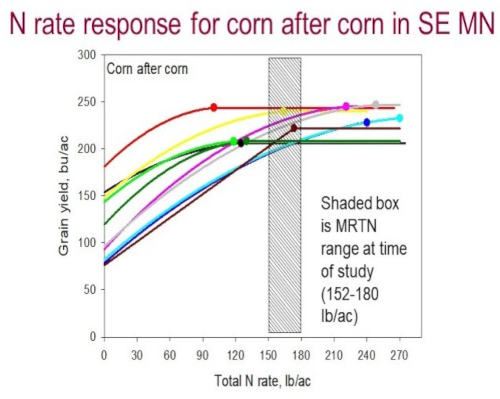
Each dot in the figure above represents the most economical rate for one trial in Vetsch's study. Two of his trials were within the MRTN range, four below it, and four above it, highlighting the variability that he saw in corn-after-corn. The curved lines for each trial show the expected yield for the field at different N rates. You can see that yields rise rapidly at rates below the MRTN range and then begin to level off. This is where the cost of additional nitrogen fertilizer begins to eat away at profits from increasing yields, as more and more N fertilizer is needed for each bushel of yield increase.
Vetsch agrees with Fernandez that heavy downpours are a prime suspect. Of the 10 corn-on-corn sites, six had at least two months in the growing season with 50-200% greater than normal rainfall and seven experienced excessively wet falls.
“That's really a major factor that could be driving how corn-on-corn is behaving compared to corn-after-soybean,” Vetsch added.
Going forward
One of the biggest challenges with managing the university’s MRTN database is figuring out how much old data to throw out as new data is added. One of the strengths of the MRTN database is how many years and sites of data they have. Relying too heavily on newer data can be risky because you may end up over-representing data from an outlier year or site. For example, an uncharacteristically wet year could skew a slimmer dataset, resulting in unnecessary over-application of nitrogen in the following years.
While Kaiser is considering getting rid of more of the older data, Vetsch recommends that growers and crop advisors try not to overreact to one site or one year’s worth of data.
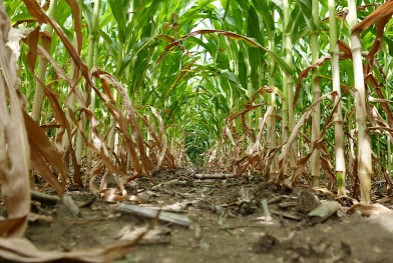
“You need to look at things over time, and you need to look at more than one location or farm, and more than one site-year or environment,” he advised. “Don't overreact to just one experience that you might have.”
While plus-minus strips aren’t as rigorous as the full N rate response trials that the university conducts, Kaiser sees power in the number of trials Wiebers has been able to place.
“The coordination is key,” Kaiser said. “That's where having AFREC support, particularly a supportive position that can work as kind of a central coordinator, like what Matt's been doing, is really critical.”
The university researchers are also looking at developing regional guidelines but currently do not have enough data to do so. They view on-farm research as a potential solution to get the data they need in the future, but one with its own unique set of challenges.
Wiebers hopes his project has shown how modern agricultural technology makes on-farm research easier to do — not just for researchers, but farmers as well.
“One of the things we've learned from this AFREC study is that farmers have the right precision ag equipment to do this,” he said. “Some guys see this research as the next opportunity for maximizing yields for the next generation of farmers.”
Source : umn.edu